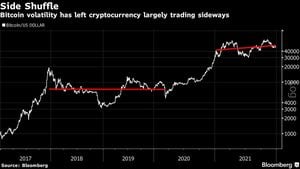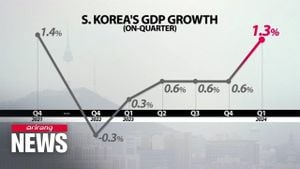California's ambitious high-speed rail project, once heralded as the future of mass transit, is now grappling with intense scrutiny nearly two decades after its inception. Originally estimated to cost $33 billion and slated for completion by 2020, the project's budget has soared to over $100 billion, and federal officials are beginning to take notice. Recently, Transportation Secretary Sean Duffy announced plans to launch a compliance review to examine the $4 billion pledged for the project by the Biden administration.
At the forefront of this discussion is the impact felt by residents living near construction sites. Dalia Pena, a Madera County resident, expressed frustration over the noise and disruption caused by nearby construction of an overpass, which she described as transforming her once-peaceful neighborhood. "They were out here doing construction at 6 o'clock on Saturday mornings," Pena said, highlighting the strains imposed by the project. The construction work has not only made life challenging for her but has also raised concerns about property encroachment, with Pena affirming, "The authority doesn't hold them accountable."
While the California High-Speed Rail Authority insists it has kept residents informed, many like Pena feel the communication has been lacking. Despite having attended meetings about the construction plans, she contends she was not adequately informed about the potential impacts as construction began. "They're giving me the runaround, honestly," she lamented. This sentiment resonates with several stakeholders who are growing increasingly uneasy about the project's management, costs, and transparency.
Former President Trump has long been skeptical of California's bullet train initiative. He previously outlined his dissatisfaction with what he deemed unnecessary expenditures on such lofty plans, especially when it appears the project is far from completion, even after federal and state financial commitments. "It's been 17 years and $16 billion and no rail has been built," Duffy said during the announcement at Union Station, emphasizing the perpetual delays and budgetary mismanagement tied to it.
Federal representatives from California have echoed similar sentiments. Congressman Kevin Kiley asserted, "We’re wasting taxpayer money on this project on an epic scale and not getting anything in return for it." These statements could signify the beginning of political repercussions for the high-speed rail project, which has already faced widespread criticism from various quarters. Kiley's comments reflect broader concerns about the rationale behind continuing to fund such projects lacking visible progress.
The high-speed rail's inception dates back to 2008, when California voters approved the project with hopes of linking San Francisco to Los Angeles via high-speed rail. At the time, the initiative was ushered with grand promises of environmental benefits, faster travel times, and economic stimulation. Yet, as delays mounted and budgets inflated, the once-prized project became synonymous with government inefficiency.
While the California High-Speed Rail Authority maintains there has been significant economic impact—claiming $22 billion generated so far—many residents and lawmakers remain unconvinced. The need for accountability is underscored by revelations of delayed environmental reviews, challenges with land acquisition, and the shifting timelines for achieving operational status. The newly proposed plan aims to connect Merced, Fresno, and Bakersfield, with hopes of completion between 2030 and 2033.
Support for the project remains, albeit increasingly fractured. Despite the growing backlash against the management of the rail system, proponents continue to advocate for the anticipated benefits of modernized infrastructure. A vocal segment of the public rallied behind the project, chanting, "Build the rail!" during recent events where officials addressed concerns about compliance and funding. This juxtaposition highlights the divided opinion on the high-speed rail's necessity and implementation.
Meanwhile, the proposed investigations and compliance audits could weigh significantly on future funding and operational capacity. Duffy's review of the project's expenditures may signal heightened scrutiny over taxpayer dollars and adherence to federal commitments, leaving the California High-Speed Rail Authority with mounting pressure to deliver results.
The dilemmas facing the California bullet train serve as cautionary tales for future large-scale infrastructure investments both within the state and nationally. The developments and discussions surrounding California's high-speed rail project embody broader themes of governance, public investment, and accountability—elements at the heart of public concerns over how taxpayer funds are allocated and managed.
With the future of the high-speed rail project uncertain and surrounded by criticism on multiple fronts, only time will tell if the promises of the past can culminate in concrete results. For residents like Pena, the prospect of improved transportation may seem distant amid the current chaos and discontent surrounding the California high-speed rail project.



